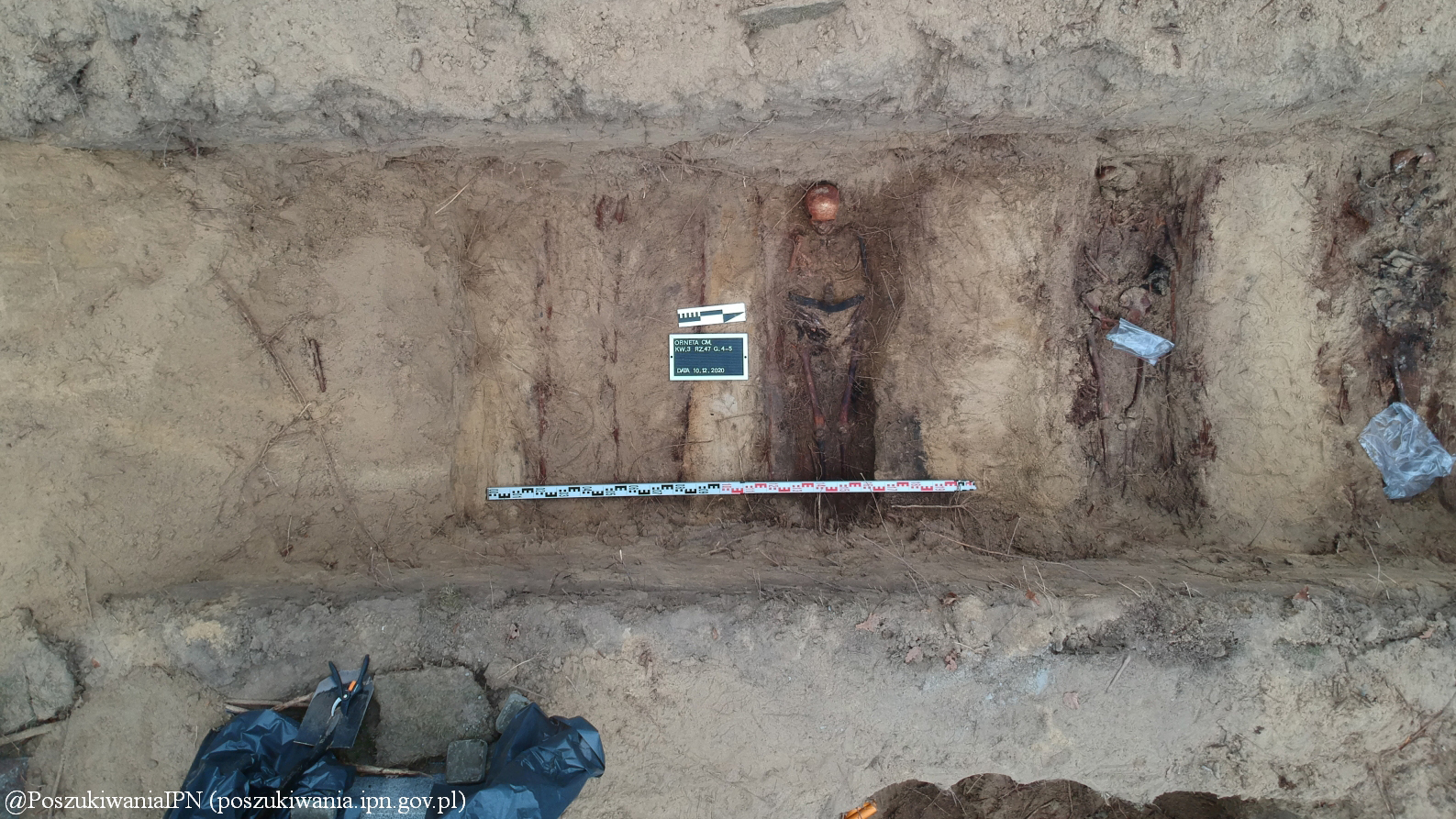Skeletons of WWII-era nuns murdered by Soviets unearthed in Poland
Religious objects, such as crucifixes and medallions, helped experts identify the victims.

Archaeologists recently unearthed the skeletons of three Catholic nuns who were murdered by Soviet soldiers at the end of World War II. Their discovery concludes a months-long search for the bones of seven nuns who were killed during the former Soviet Union's brutal occupation of the war-torn country.
Russia's Red Army invaded Poland in 1944, as Nazi Germany withdrew their soldiers. During that time, Soviet forces sought to seize control by suppressing Polish militia and religious figures, imprisoning, deporting and killing Polish soldiers, clergy and civilians. Records from 1945 documented Soviet soldiers slaughtering seven nuns in the order of St. Catherine of Alexandria, representatives of the Polish Institute of National Remembrance (IPN) told Live Science in an email.
To find out where these murdered nuns were buried, archaeologists first excavated a site in Gdańsk in July 2020, where they found the remains of Sister Charytyna (Jadwiga Fahl), according to a statement from the IPN. An excavation in Olsztyn in October revealed what are thought to be the remains of Sister Generosa (Maria Bolz), Sister Krzysztofora (Marta Klomfass) and Sister Liberia (Maria Domnik), all of whom were nurses at Olsztyn's St. Mary's Hospital.
Related: Photos: Mass graves hold 17th-century prisoners of war
To find the remaining three nuns, archaeologists in December excavated a site in a municipal cemetery in Orneta that measured about 215 square feet (20 square meters), using local archival records, such as a hand-drawn burial plan, to find the nuns' bodies. To reach the graves from 1945, they first had to exhume more recent burials that were on top of them. The remains they eventually found are thought to belong to the last three nuns in the group: Sister Rolanda (Maria Abraham), Sister Gunhilda (Dorota Steffen) and Sister Bona (Anna Pestka), according to a separate IPN statement.
Historic documents, the age and sex of the remains, and the presence of numerous religious objects indicated that the skeletons belonged to the murdered nuns, the IPN said. The religious artifacts included articles of clothing associated with the St. Catherine order, small rosaries with polished beads, larger rosaries for wearing on a belt, a cross inlaid with metal designs and two medallions "with images of the holy family," IPN representatives said in the email.

"Mass terror ensued"
When the Germans began retreating from Poland in 1944, Russia seized the chance to take control of the country. "Mass terror ensued in the territory occupied by the Soviets," according to the Warsaw Institute, a geopolitical think tank in Poland. As the Red Army advanced into cities and territories, soldiers looted and burned churches and religious buildings, and nuns were treated "with particular cruelty," IPN representatives said.
Sign up for the Live Science daily newsletter now
Get the world’s most fascinating discoveries delivered straight to your inbox.
In February 1945, Russian forces descended upon hospitals in Gdańsk-Wrzeszcz, Olsztyn and Orneta, where nuns in the St. Catherine order served as nurses. Soldiers beat and stabbed patients and attacked the nuns who intervened, causing horrific injuries; Sister Rolanda's face "was mutilated and swollen beyond recognition," and Sister Gunhilda was shot three times, according to the IPN.

Sister Krzysztofora died after "a long fight with a Soviet soldier," the IPN reported. At the time of her death, her eyes were gouged out, her tongue was cut off and she had been stabbed with a bayonet 16 times, according to the statement.
DNA analysis of the seven skeletons is underway at the Forensic Medicine Institute in Gdańsk to confirm the nuns' identities, and Catholic clergy in Poland are seeking beatification for the murdered St. Catherine sisters, according to the IPN.
Originally published on Live Science.

Mindy Weisberger is an editor at Scholastic and a former Live Science channel editor and senior writer. She has reported on general science, covering climate change, paleontology, biology and space. Mindy studied film at Columbia University; prior to Live Science she produced, wrote and directed media for the American Museum of Natural History in New York City. Her videos about dinosaurs, astrophysics, biodiversity and evolution appear in museums and science centers worldwide, earning awards such as the CINE Golden Eagle and the Communicator Award of Excellence. Her writing has also appeared in Scientific American, The Washington Post and How It Works Magazine. Her book "Rise of the Zombie Bugs: The Surprising Science of Parasitic Mind Control" will be published in spring 2025 by Johns Hopkins University Press.










